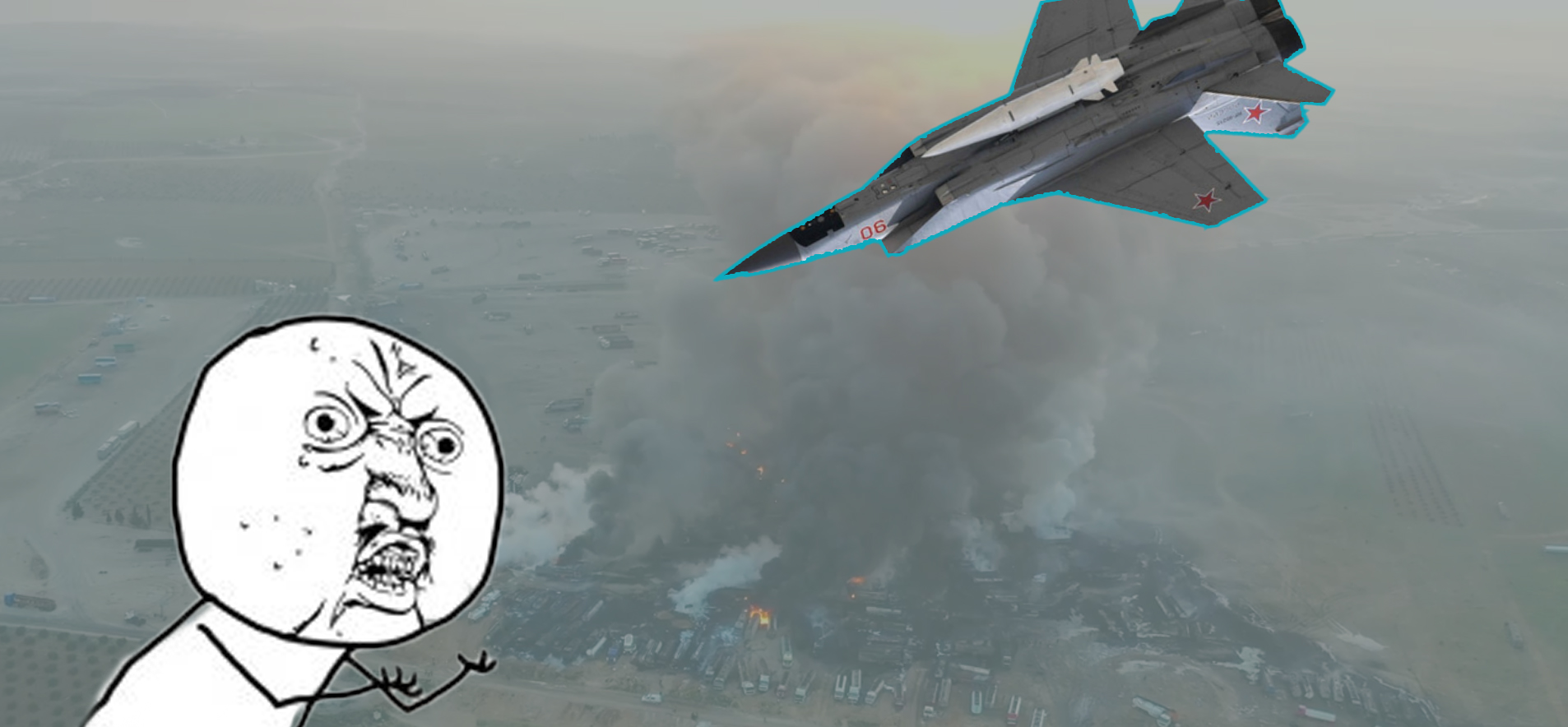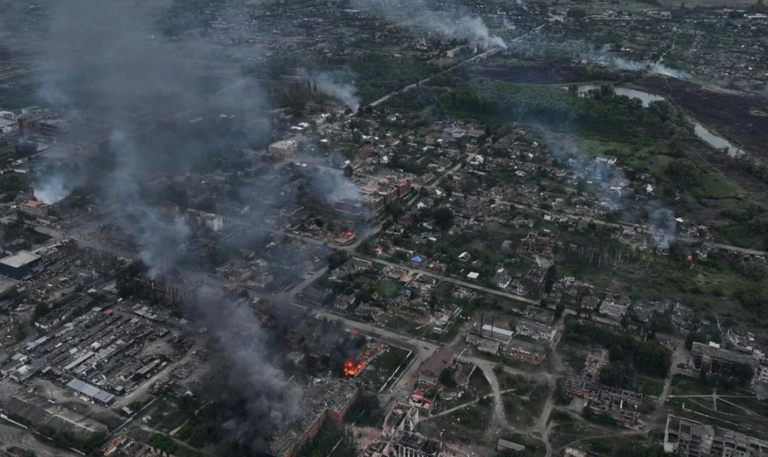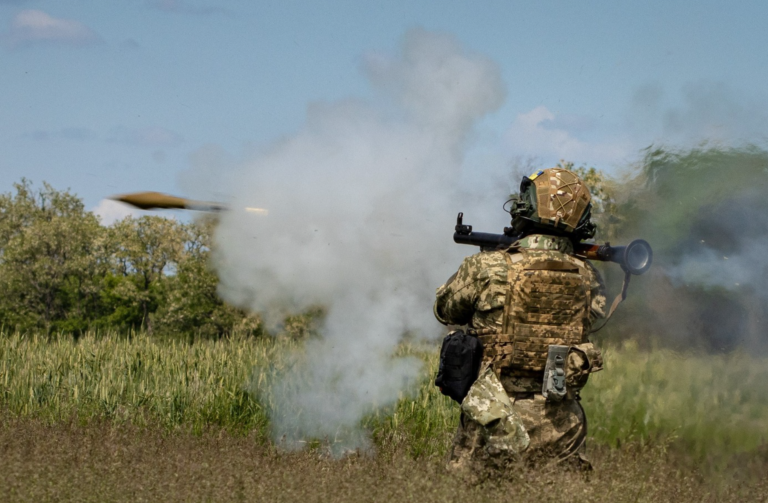Russian propaganda actively supports the narrative regarding the placement of NATO bases in Ukraine.
We have already refuted various forms of this fake, but this time the propagandists not only speculate about the NATO troops’ presence but also write about more than 150 victims. According to some publications, the number of victims reaches 200. So we decided to analyze the “news” in our investigation.
What happened?
On March 30, pro-Kremlin publications wrote about the Russian “triumph” (Lenta, MK, etc.). As usual, they have not agreed on the details and used one common “fact.” In this case, they claimed that the Russian Kinzhal hypersonic missile strike killed dozens of foreign officers in Ukraine.

Moreover, the news about the missile hitting the NATO base was actively spread on Twitter.
Analysis
Russian mass media mainly refer to the March 12 article of the Greek Pronews publication, “The Russian hypersonic missile Kinzhal hit the NATO command center in Ukraine at a depth of 130 meters underground!”.

Let’s dive into the chronology of the article. First, the text provides information about the damage to the “underground NATO base.” However, the report does not indicate the hit’s date, the impact’s place, or the publications that wrote about it.
“The Russian Kinzhal hypersonic missile hit the joint Ukrainian-NATO command and communication center located at a depth of 130 meters. More than 300 people lived in the underground headquarters. The Russians say that they have so far pulled out 40 dead from the wreckage of the underground headquarters, but most are unretrievable.”
However, the article quotes from the speech of the President of Ukraine on March 9, 2023. In it, he noted that the enemy fired 81 rockets that day:
“Mass rocket fire across the country. Kyiv, Kirovohrad Oblast, Dnipro Oblast, Odesa Oblast, Kharkiv Oblast, Zaporizhzhia, Lviv Oblast (point of impact), Ivano-Frankivsk Oblast, Zhytomyr Oblast, Vinnytsia Oblast.”
In fact, Volodymyr Zelenskyy’s message did contain a list of affected areas, but the phrase “point of impact” was missing.

Thanks to this, we found out that according to the logic of the authors of the article, the NATO underground base was located in Lviv Oblast.
Also, the Greek publication refers to an interview with Yurii Ihnat, in which he reports that on March 9, six Kinzhal missiles were fired over Ukraine. This information was confirmed by the Commander-in-Chief of the Armed Forces of Ukraine, Valerii Zaluzhnyi.
What has really happened? According to official information, on March 9, 2023, one of the Russian missiles did hit the Zolochiv district in Lviv Oblast. As the head of the Zolochiv city territorial community Ihor Hrynkiv reported on the air of the telethon, the rocket hit two residential buildings in the village of Velyka Vilshanytsia. Five people, the ordinary residents of the Zolochiv district, died.
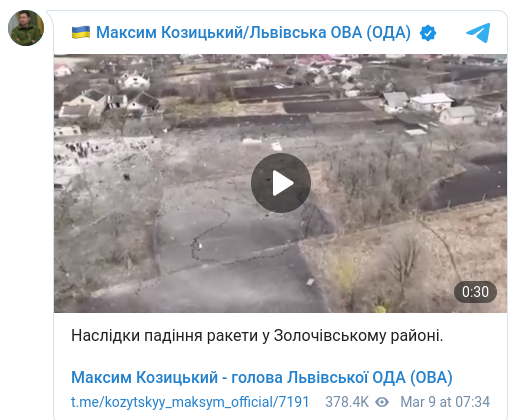
Maksym Kozytskyi, the head of the Lviv Regional Military Administration, reported on his Telegram channel that that day, other missiles that were in Lviv Oblast airspace were shot down by the air defense forces.
Moreover, Russian official sources did not report on March 9 about hitting the NATO base.
The Armed Forces of the Russian Federation hit Ukraine with a “Kinzhal” for the terrorist attack in the Briansk Oblast, the Ministry of Defense of the Russian Federation reported, noting that “all designated objects were hit.” The Ministry of Defense of the Russian Federation announced that as a result of the strike by the Russian Armed Forces, the bases of Ukrainian attack unmanned aerial vehicles were destroyed, and energy facilities were damaged.
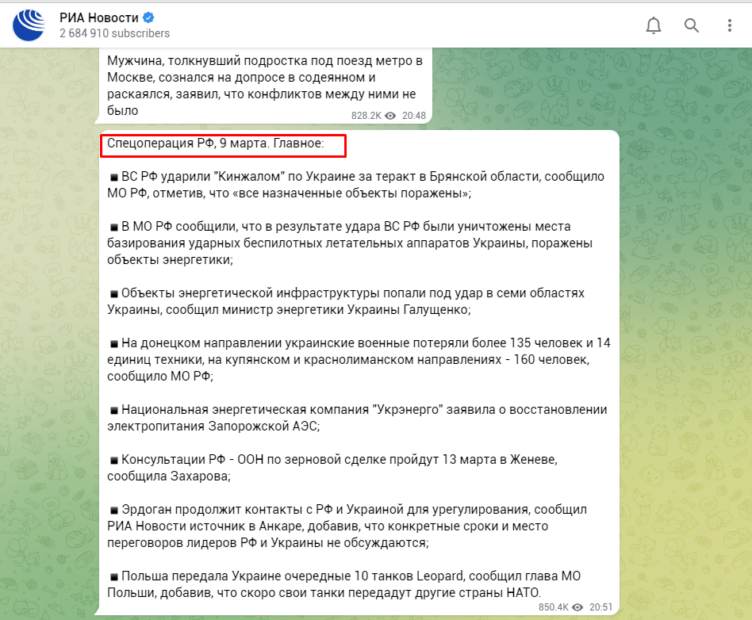
That is, until March 30, the date of publication of the articles in the mass media, even the leading pro-Kremlin publications did not write about the underground NATO base destruction.
Moreover, it would be difficult for any state to hide such significant losses of 300 people, especially if they are foreign citizens.
Also, the content of the Pronews article was changed twice, but no updates were indicated in the text.

Through a reverse search, we found that the Twitter posts with the image of the burning base are screenshots from the 2021 video.
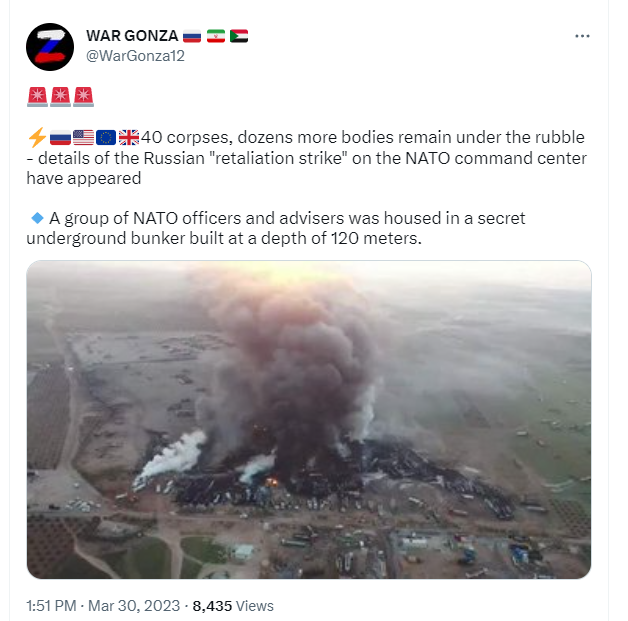
And it does not depict Ukraine but the settlement of Al-Hamran in Syria. A Facebook post with this video has the following caption:
“This is not a battlefield … but the fuel market in the village of Al-Hamran in the eastern countryside of #Aleppo turned by the regime forces and Russia into a piece of hell for civilians whose only sin is seeking to earn a living for their families.”

We will once again refute the thesis regarding the location of NATO bases on the territory of Ukraine. First, according to Article 17 of the Constitution of Ukraine,
“Foreign military bases are not allowed to be located on the territory of Ukraine.”
We will also once again quote the statement of Serhii Leshchenko, adviser to the head of the President’s Office:
“They [NATO bases – ed.] could not be opened because NATO bases are opened only on the territory of the member states of the Alliance, and Ukraine does not even have the status of a candidate for NATO.”
Conclusions
Once again, we draw your attention to the fact that by creating fakes about NATO, Russian propaganda does not care about creating an evidence base. Due to the constant support of noisy data about NATO, Russian society is already used to this news. However, such an “achievement” as hitting the “underground NATO base” caused a lot of attention to the topic – this can be traced with the help of Google Trends.
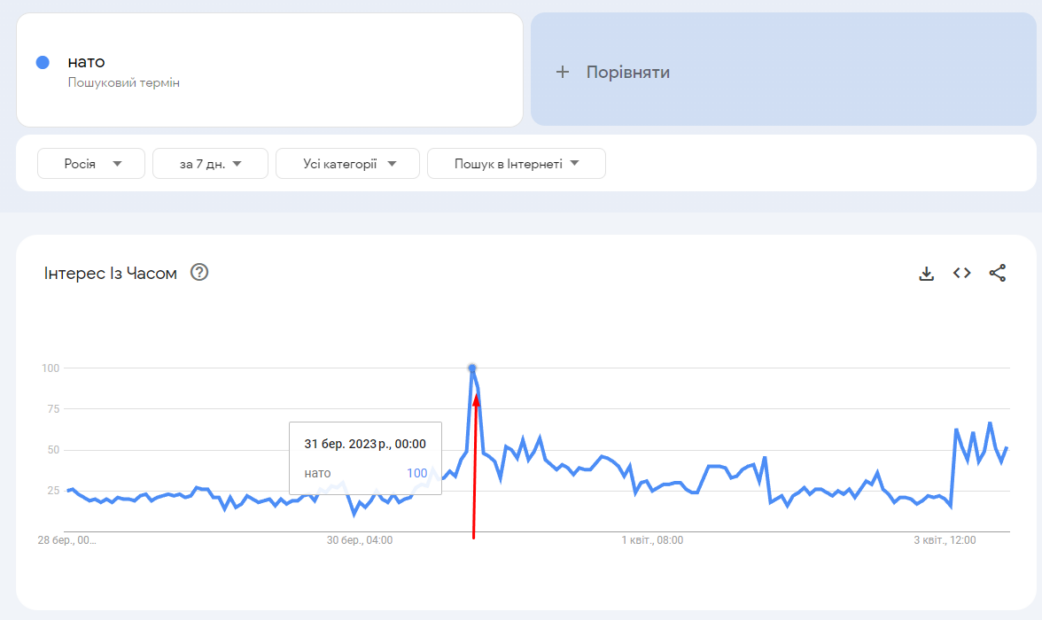
The news has no evidentiary basis, and the narrative of the existence of NATO bases in Ukraine has been repeatedly refuted by us and other Ukrainian and foreign media.
It may not be easy to understand whether the information is trustworthy. That is why we created the Perevirka bot. Send any news in Ukrainian or English, and within 24 hours, you will find out whether you can trust the chosen publication.
by Yuliana Topolnyk,
translated and edited by Tetiana Fram
We are an independent media reporting from wartime Kharkiv despite the blackouts and shelling. You can support our work. Join our Patreon to support independent journalism in Ukraine.
Follow us on Twitter, Instagram and LinkedIn for more news, stories, and field reports by Kharkiv journalists.
